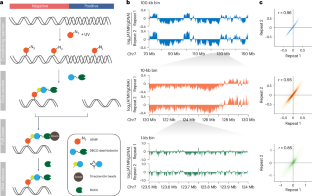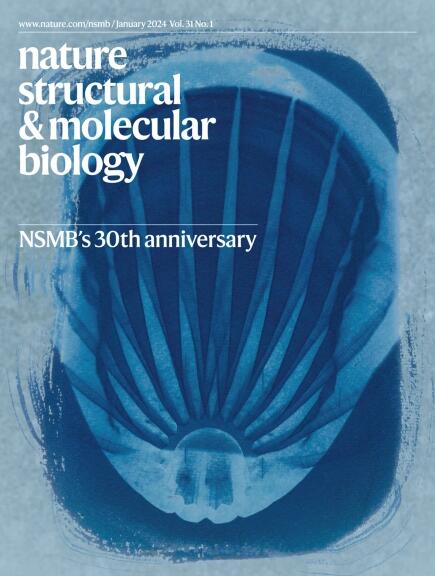Topoisomerase-modulated genome-wide DNA supercoiling domains colocalize with nuclear compartments and regulate human gene expression
IF 12.5
1区 生物学
Q1 BIOCHEMISTRY & MOLECULAR BIOLOGY
引用次数: 0
Abstract
DNA supercoiling is a biophysical feature of the double helix with a pivotal role in biological processes. However, understanding of DNA supercoiling in the chromatin remains limited. Here, we developed azide-trimethylpsoralen sequencing (ATMP-seq), a DNA supercoiling assay offering quantitative accuracy while minimizing genomic bias and background noise. Using ATMP-seq, we directly visualized transcription-dependent negative and positive twin-supercoiled domains around genes and mapped kilobase-resolution DNA supercoiling throughout the human genome. Remarkably, we discovered megabase-scale supercoiling domains (SDs) across all chromosomes that are modulated mainly by topoisomerases I and IIβ. Transcription activities, but not the consequent supercoiling accumulation in the local region, contribute to SD formation, indicating the long-range propagation of transcription-generated supercoiling. Genome-wide SDs colocalize with A/B compartments in both human and Drosophila cells but are distinct from topologically associating domains (TADs), with negative supercoiling accumulation at TAD boundaries. Furthermore, genome-wide DNA supercoiling varies between cell states and types and regulates human gene expression, underscoring the importance of supercoiling dynamics in chromatin regulation and function. Here, the authors develop an assay to measure DNA supercoiling, revealing DNA supercoiling domains across the human genome that are modulated by topoisomerase and showing their colocalization with nuclear compartments and impact on gene expression.


拓扑异构酶调控的全基因组DNA超卷曲结构域与核分区共定位并调控人类基因表达
DNA 超卷曲是双螺旋的一个生物物理特征,在生物过程中起着关键作用。然而,人们对染色质中DNA超螺旋的了解仍然有限。在这里,我们开发了叠氮-三甲基补骨脂素测序(ATMP-seq),这是一种DNA超卷曲检测方法,可提供定量准确性,同时最大限度地减少基因组偏倚和背景噪音。利用 ATMP-seq,我们直接观察到了基因周围依赖转录的负向和正向孪生超卷曲域,并绘制了整个人类基因组的千碱基分辨率 DNA 超卷曲图谱。值得注意的是,我们在所有染色体上都发现了主要由拓扑异构酶 I 和 IIβ 调节的兆碱基规模的超卷曲域(SDs)。转录活动(而非随之而来的局部区域的超卷曲积累)有助于 SD 的形成,这表明转录产生的超卷曲具有长程传播性。在人类和果蝇细胞中,全基因组SD与A/B区定位,但有别于拓扑关联域(TAD),在TAD边界存在负的超卷积。此外,全基因组DNA超卷曲在不同细胞状态和类型之间存在差异,并调控着人类基因的表达,凸显了超卷曲动力学在染色质调控和功能中的重要性。
本文章由计算机程序翻译,如有差异,请以英文原文为准。
求助全文
约1分钟内获得全文
求助全文
来源期刊

Nature Structural & Molecular Biology
BIOCHEMISTRY & MOLECULAR BIOLOGY-BIOPHYSICS
CiteScore
22.00
自引率
1.80%
发文量
160
审稿时长
3-8 weeks
期刊介绍:
Nature Structural & Molecular Biology is a comprehensive platform that combines structural and molecular research. Our journal focuses on exploring the functional and mechanistic aspects of biological processes, emphasizing how molecular components collaborate to achieve a particular function. While structural data can shed light on these insights, our publication does not require them as a prerequisite.
 求助内容:
求助内容: 应助结果提醒方式:
应助结果提醒方式:


